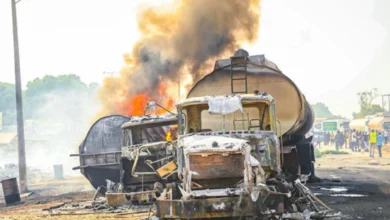
Will the ‘Red Mirage’ or ‘Blue Shift’ Influence This Year’s Election?
The story election night results tell often differs from the final vote count. Many Americans wonder about the “red mirage” and “blue shift” patterns they see. These voting trends have become crucial in recent elections, especially when states use different methods to process and count mail-in ballots. Voters and election observers need to understand these patterns to make sense of how results unfold on election night and the days that follow.
Battleground states and their vote-counting procedures have grabbed attention as the 2024 election approaches. State laws continue to change while mail-in ballot processing varies among swing states. These factors will shape how quickly officials can report results. This piece dives into why the red mirage and blue shift happen, what it means for specific states, and helps voters know what to expect as results come in during the upcoming election.
Understanding the ‘Red Mirage’
The “red mirage” phenomenon results from how different voting methods and ballot-counting procedures work together in modern American elections. This pattern shows up when vote counts at the start display stronger Republican numbers compared to final results. Republican candidates appear to have an advantage that usually disappears as officials count all ballots.
These important factors create the red mirage effect:
- Rural and urban areas count votes at different speeds
- Each jurisdiction follows its own vote-counting procedures
- Voters from each party prefer different voting methods
- Each state’s laws decide when to process ballots
Massachusetts Institute of Technology researchers discovered that Democratic-leaning counties counted ballots 15-20% slower than Republican areas in 2020. This happened because these areas received more mail-in ballots and had different processing rules.
The 2020 presidential election showed a perfect example of the red mirage effect. Americans cast about 65 million mail-in ballots, and many swing states showed strong Republican leads on election night. Pennsylvania became a notable case. The state’s final outcome remained unclear until November 6, when mail-in ballot counting changed the results.
The red mirage affects how people view election night results. Vote counting that continues past election night can confuse voters who expect quick results. Some groups exploit this uncertainty to spread doubts about election integrity, especially when voters don’t understand how vote counting works.
The Brookings Institution explains that people accept certified results better when they understand why vote counting takes time. Election officials now work harder to explain expected delays and voting procedures. They know that being transparent about the counting process helps maintain the public’s trust in election results.
Exploring the ‘Blue Shift’
Edward Foley, an election law expert at Ohio State University, discovered and named the blue shift phenomenon through his analysis of the 2012 presidential election counting patterns. His research showed that Democratic candidates gained more than 22,000 votes consistently during post-election counts across the previous four presidential races.
Origin and meaning
The blue shift describes a pattern where Democratic candidates receive more votes during the post-election count. This trend emerges especially when election officials count absentee and provisional ballots. Over the last several years, this pattern has become more common in American elections since 2004, after the Help America Vote Act of 2002 took effect.
Why the Blue Move Happens
The blue move pattern emerges from several important elements:
- Democratic-leaning demographics use provisional ballots at higher rates
- Democratic voters prefer mail-in voting more often
- State laws vary in their ballot processing schedules
- Large urban areas count votes more slowly due to complex procedures
Significance in recent elections
The blue shift has played a notable role in recent presidential elections. Hillary Clinton’s post-election gains in 2016 weren’t enough to change the Electoral College outcome, but they helped her secure a significant popular vote margin. The effect became more obvious in 2020, when battleground states saw big changes as officials counted mail-in ballots.
The Massachusetts Institute of Technology Election Lab’s analysis revealed that counties Biden won took longer to process ballots than Trump-won counties. This led to a one-point increase in votes counted after Election Day Thursday. These counting patterns matched closely with what happened after the 2016 election.
States have updated their voting procedures and preprocessing rules lately. The blue shift will likely continue, but its size could vary a lot between different areas. Several states now require mail ballots earlier and can process them sooner, which might change how future blue shifts unfold.
State-by-State Analysis
Battleground states in America show unique patterns in vote counting and election coverage. Each state’s electoral laws and population distribution create these differences. The predictable changes between early and final results make certain states follow specific result patterns.
Swing states prone to ‘Red Mirage’
Wisconsin and Michigan serve as clear examples of states that often display early Republican advantages. Wisconsin law prevents the counting of mail-in ballots until Election Day. This creates significant delays in urban areas like Milwaukee where Democratic voters prefer mail-in voting. Michigan shows similar patterns with early Republican leads because smaller rural counties report their results first, though their processing speed has improved since 2020.
States Expected to ‘Blue Shift’
Georgia and North Carolina show unique voting patterns. These states count early votes and mail-in ballots first, which often creates Democratic leads that change as Election Day votes come in. These states share several distinct features:
- Election officials can process ballots weeks before Election Day
- Mail-in and early voting results must appear within the first hour
- Same-day votes get counted quickly through efficient systems
Unique cases (e.g., Pennsylvania)
Pennsylvania stands out as a complex case because of its unique counting procedures. The state shows several changes throughout the counting process:
| Phase | Timing | Typical Pattern |
|---|---|---|
| Original Count | Election Night | Early blue lead from first mail ballots |
| Mid-Count | First 24 hours | Change to red as Election Day votes processed |
| Final Count | Following days | Gradual blue change as remaining mail ballots counted |
Nevada’s vote counting tells a different story. Clark County’s large population often creates delays in its coverage patterns. The state accepts mail ballots that arrive after Election Day as long as they’re postmarked by election day. This rule can extend the counting period and lead to changes in results.
Each state has its own way of handling ballots, which depends on local procedures, population spread, and reporting methods. Michigan recently changed its laws to allow earlier processing of mail ballots, which changed its reporting patterns. Wisconsin has kept its original restrictions, which leads to election night delays in major population centers.
Implications for the 2024 Election
The most important changes in voting patterns and state laws will reshape result reporting on election night for the 2024 presidential election. Pre-election voting numbers reveal markedly different patterns compared to 2020, while early voting participation remains lower than pandemic-era levels.
Changes in voting patterns since 2020
Early voting patterns have changed by a lot since 2020. Republican voters now participate more actively in early voting than previous years. Pre-election voting numbers remain by a lot lower than during the pandemic. These new patterns point to smaller red mirage and blue shift effects compared to 2020.
Updated state laws and procedures
Significant changes have transformed election procedures across several battleground states:
| State | Key Changes | Expected Impact |
|---|---|---|
| Michigan | 8-day pre-processing | Faster original results |
| Georgia | New verification steps | Potential certification delays |
| North Carolina | Election Day deadline | Reduced late ballot processing |
Effects on election night reporting
States will report their results at different speeds. Several factors will determine how quickly we see the results:
- Areas with more than 5,000 residents can now process mail ballots earlier
- Mail ballot pre-processing remains restricted in some states
- New verification steps could make certification take longer
These changes mean some states might report results faster than they did in 2020, while others could need more time to count. Michigan should report results faster thanks to improved pre-processing rules. Georgia’s new verification requirements might slow down its certification process. Pennsylvania and Wisconsin still don’t allow mail ballot pre-processing, which could delay results in these vital battleground states.
Election officials stress that longer counting times show their commitment to security procedures rather than pointing to systemic problems. The December 11, 2024 certification deadline gives enough time to count all votes and conduct recounts in close races.
Red mirage and blue shift patterns are vital elements in modern American elections, though they may look different from previous cycles. Each state has updated its ballot processing rules, and voter priorities have evolved. These patterns will likely continue in 2024 with different intensities in each jurisdiction. Officials in key battleground states have modified their election procedures to provide quick result reporting while maintaining accurate vote counts.
The vote count might fluctuate as election workers process and count different types of ballots after polls close. Election officials will verify every vote carefully to ensure accuracy, even if it takes extra time. This systematic approach to counting votes might extend result certification timelines, but it shows the reliable American electoral process that protects election integrity.






